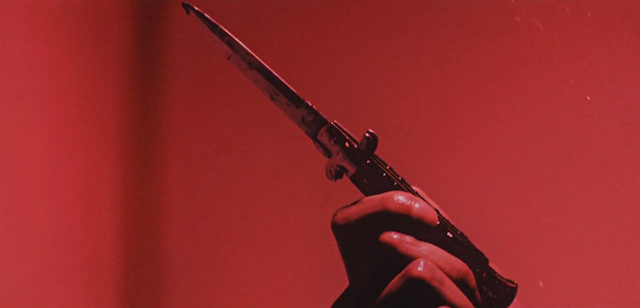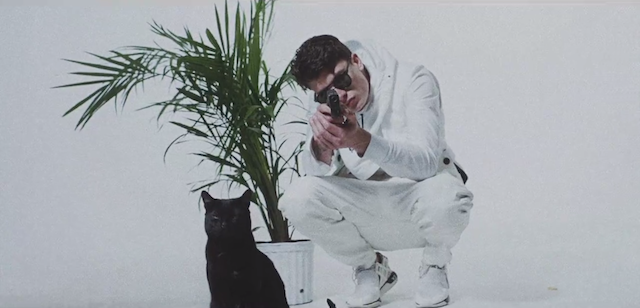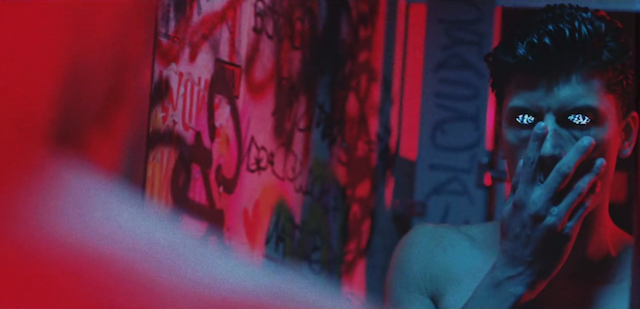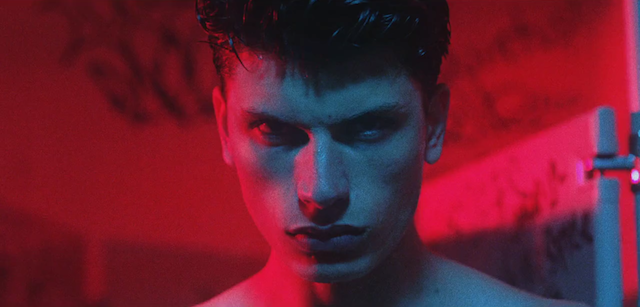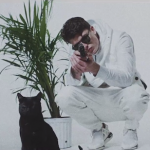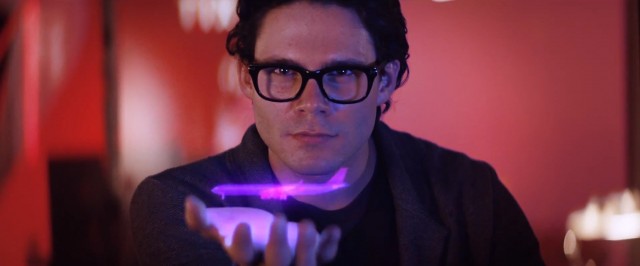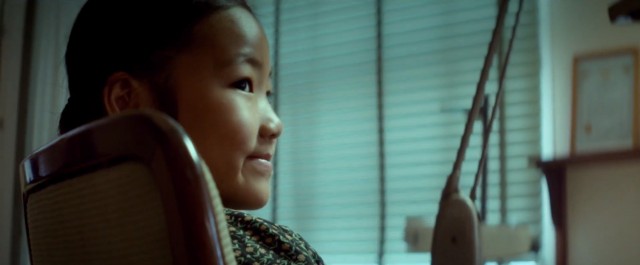Cool’s original power had derived from its formative role in forging a modern personality type, a style of engagement – indirect, ironic, flexible, infused with humor, sometimes flippant – that was adopted with success by a growing percentage of the population.
But the relentless mass marketing of cool has tainted this style of behavior and made it seem inauthentic or contrived to a growing number of individuals. It is almost inconceivable that anything could happen, at this late stage, that would restore to cool the freshness and vitality it possessed in the fifties and sixties.
Of course, the old-school cool ethos will not disappear completely. Even when some color or fabric is passé, it still finds its way into our wardrobe. But cool now lacks conviction and energy. Above all, its economic force is diminishing. And this, more than anything, will accelerate its decline. One busy cash register is worth more than a thousand pundits. The arbiters of taste – at record labels, in films and TV, in consumer marketing, in media – will respond to these economic shifts rather than lead them. But follow they must, or disappear from the scene. Their successors will not make the same mistakes. Over time, this will transform even the last institutional bastions of cool into promoters of the postcool worldview.
One of the most interesting spectacles of postcool society will involve the dominant forces of the old paradigm scrambling to co-opt the new one. Packaged and slick and phony will attempt to become down-home and natural and authentic. We can see this playing out in many arenas – from music to clothing, politics to daily news. But let us take one sector of our economy and show how this works.
In consumer food products the postcool celebration of the natural and authentic is spelled out in the recent dramatic growth in the sale of organic fruits and vegetables, vitamin supplements, antibiotic-and-hormone-free beef, and other products that previously existed only on the fringes of the food industry. Of course this trend spells trouble for packaged-food multinationals, who are the real losers here. How do they respond? In the postcool society, representatives of the old paradigm imitate the new one. So we have the Naked Juice company, with its line of 100 percent natural, unsweetened beverages … but it’s owned by Pepsi.
The registered slogan of this company is “Nothing to Hide” – but one thing is clearly hidden in its marketing campaigns: its connection with PepsiCo Inc. Visit the Naked Juice website, and see if you can find the name of the parent company anywhere. Goodluck! Then again, Naked Juice needs to deal with its competitor Odwalla, a leader in all-natural juices … owned by Coca-Cola.
Next stop on your itinerary, please visit the website for Dagoba, a company committed to the highest quality organic chocolate, and see if you can find any mention of parent company Hershey. But Mars Inc., maker of M&M’s and Snickers, has gone even further, acquiring Seeds of Change, which sells more than six hundred types of 100 percent organically grown seeds. And we have the Back to Nature brand of cereal and granola … but it is now owned by Kraft foods, makers of Cheez Whiz and Velveeta. Heinz, through its minority position in Hain Celestial, has an equity share in dozens of natural brands. I could cite countless other examples. In fact, almost every major purveyor of packaged, processed food loaded with preservatives and various chemicals is trying to position itself as a champion of healthy, natural eating.
But the fascinating angle here is how well hidden these relationships are. In the old days, Hershey would make sure everyone knew they were involved when they sold chocolate. After all, what could be a better endorsement for confections than the Hershey brand name? Or Coca-Cola’s for beverages? Or Pepsi’s? These companies have invested billions of dollars in building and enhancing the value of their brand names. Pepsi alone has purchased celebrity endorsements at untold cost from Britney Spears, Mariah Carey, P!nk, Christina Aguilera, Michael Jackson, Janet Jackson, David Beckham, David Bowie, Shakira, Jackie Chan, Halle Berry, Jennifer Lopez, Tina Turner, Justin Timberlake, Beyonce Knowles, Mary J. Blige, the Spice Girls, Ray Charles, and many, many others. Yet now this company needs to conceal its involvement in the fastest-growing segments of the beverage market? What gives? We see the same old shift in field after field – music, media, consumer products, retailing, politics, fashion, academia, the internet, almost everywhere you look. Organizations that have spent decades investing in their image, their brand, their logo, now admit that it’s best to junk all that and start with a clean sheet of paper.
This paradox will become part of the day-to-day life in postcool society. Even if postcool celebrates the real and authentic, the simple and down to earth, it doesn’t mean that these attributes will actually dominate public life. Instead we will find a grand charade of phony pretending to be authentic, of contrived acting as though it is real, the intricately planned putting on the mask of the simple and unaffected. In many instances, postcool will just be the same folks who brought you cool, hiding behind a mask.
But this faux postcool will increasingly be forced to compete with the real thing. Grassroots movements will be built around the core postcool values of simplicity, authenticity, naturalness and earnestness. These will flourish outside the market place, in public and private discourse, shaping attitudes and interpersonal relations. True, they will have an economic impact, but their significance will not be reducible to dollars and cents. Postcool will inhabit people’s psyches long before it takes control of their wallets.
This core distinction will be our chief guide in distinguishing the phony corporate maneuverings from the real grassroots changes that will drive postcool society. The former will always inhabit a product or service. And if the cool was a friend to business, seeing its own destiny in accessories and gadgets, the postcool will have a more ambivalent relationship with the prevailing economic interests. The new ethos does not require expensive new accessories and often will take positive delight in downscaling lifestyles and paring back on unneeded extras.
Simplicity, authenticity, naturalness and earnestness … I mentioned these as though they were parts of a product positioning exercise. But in fact they will be in the foundations of the postcool personality type. Just as the cool was at its best when internalized as a way people acted and not just trumpeted as a marketing message, so will postcool have its greatest impact as a way people instinctively deal with situations and circumstances. In a book such as this, the examples gathered inevitably come from things that can be seen, heard, touched, measured – in short, what we call empirical evidence. But don’t let that fool you into thinking that these are the primary signs of the new postcool era. Many of the most salient changes will be those that we can grasp only indirectly and will not be measurable with any exactitude by statisticians and pollsters.
For the same reason, postcool will be less fickle and changeable than cool. Postcool is not just another style, another trend. It is the antithesis of style, of trendiness. And because it reflects an emerging personality type and not a passing fashion, postcool will probably be around for quite a while. Many merchants of cool will be tempted to dismiss or misinterpret postcool, seeing its key elements as a new, marketable lifestyle, as just one more way of being cool. We can already see many examples of this shortsighted behavior. But ultimately the attempt to treat postcool as just another variant on cool will fail.
For 50 years, the prevailing tone has been focused outward. Cool was in the eyes of the beholder, and those who lived by its principles needed constantly to be attuned to what others were thinking and doing. As trends and fashions and languages changed, the cool cats had to changes as well … or risk being left behind. And even though good guys are expected to finish last, according to the adage, cool cats are not allowed to bring up the rear. The cool was a demanding deity, requiring its adherents to keep up with the times, to maintain a retinue of admirers. But postcool, by nature inward focused and self-directed, will not be so easily budged. From now on, the game will be played by different rules.
Postcool will be more intense than cool. Higher strung. More determined and less easily deflected and distracted. For this reason, many parties will strive to win the allegiance of this rapidly growing constituency. Political candidates will build their campaigns to appeal to the new psyche. Marketers will position products to maximize their perceived value to this demographic. Social movements and churches and media will all try to attract them. Who wouldn’t want these assertive, strong-willed folks in their camp? But the challenges involved in securing their support should not be minimized. The postcool person is not a belonger, not a follower. As Arnold Mitchell discovered when he first identified this group in the seventies – when it was just a tiny subset of the American public, maybe one or two percent by his measure – these individuals are the hardest to market to … because by their nature they are suspicious of marketing and resistant to its methods.
As a result, the postcool society will be full of surprises. The scene will be marked by unexpected grassroots activities that come to the fore despite the best-laid plans of politicians and corporate execs. Exciting? Perhaps. Dangerous and volatile? Certainly at times.
Of course, even postcool may sow the seeds of its own eventual decline. A new personality type lasts longer than a passing fashion, but even deep-seated character patterns and emotional styles can outlive their usefulness. Just as the cool personality became less effective over time, postcool could find itself replaced by some yet-to-be defined paradigm. We can already see postcool’s vulnerability in its unstable reliance on bluntness and aggression, its susceptibility to anger and confrontation. When so much irritability and adversarial posturing permeate our national and local lives, won’t this breed another reaction in time, a new cooling down of the temperature and the emergence of consensus building and a softer, gentler emotional style in public and private life?
But old-school cool will not come back. The cool is dead … at least as we knew it back in the second half of the 20th century. If aspects of it still hold center stage from time to time, they will do so because they have adapted to the new state of affairs. As with all passing movements, the age of cool will inspire nostalgia and retain a few adherents, those folks who always look back dreamily at the past, lamenting the loss of the good ol’ days. But the future belongs to a different personality type and hard-nosed assertiveness. It’s like everything Mom and Dad told you is finally coming true … only now you will be hearing it from your own children.
Ted Gioia writes on music, literature and contemporary culture. He is the author of eight books, including The History of Jazz, Delta Blues and The Birth (and Death) of the Cool.

